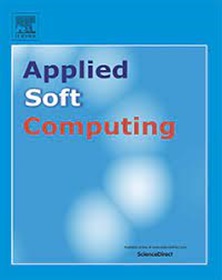A novel variable-precision granular-ball fuzzy rough set and its application in feature subset selection
IF 7.2
1区 计算机科学
Q1 COMPUTER SCIENCE, ARTIFICIAL INTELLIGENCE
引用次数: 0
Abstract
Granular-ball computing is an efficient and interpretable theoretical method for multi-granularity data processing. Traditional fuzzy rough set models have some limitations in multi-granularity generation and dynamic characterization. On one hand, most of them lack effective multi-granularity generation methods, and artificially constructed approach may lead to information loss. On the other hand, when the attribute set changes, most fuzzy rough set models exhibit limitations in accurately characterize granularity information changes, and fails to capture correlational changes between attributes. Additionally, these models often lack noise resistance capabilities and flexibility in handling various fuzzy decision scenarios. To overcome these limitations, this paper combines granular-ball computing with fuzzy rough sets, and proposes a new variable-precision granular-ball fuzzy rough set model (VPGBFRS). First, granular-ball fuzzy similarity relations and granular-ball fuzzy neighborhood are used to characterize the relationship between samples. On this basis, a pair of variable-precision granular-ball approximate operators are presented. Second, we construct a variable-precision multi-granularity dependency function to obtain richer classification information, and enhance the model’s ability to capture intrinsic data structures. Finally, we design a forward attribute reduction algorithm based on the variable-precision significance in the sense of remain the classification ability unchanged. Numerical experiments conducted on 12 datasets demonstrate that, compared with four state-of-the-art attribute reduction algorithms, the proposed model exhibits superior performance, achieving significant improvements in both classification accuracy and the size of selected attribute set.
一种新的变精度颗粒球模糊粗糙集及其在特征子集选择中的应用
颗粒球计算是一种高效、可解释的多粒度数据处理理论方法。传统的模糊粗糙集模型在多粒度生成和动态表征方面存在一定的局限性。一方面,它们大多缺乏有效的多粒度生成方法,人为构建的方法可能导致信息丢失;另一方面,当属性集发生变化时,大多数模糊粗糙集模型在准确表征粒度信息变化方面存在局限性,无法捕捉属性之间的相关性变化。此外,这些模型在处理各种模糊决策场景时往往缺乏抗噪声能力和灵活性。为了克服这些局限性,本文将颗粒球计算与模糊粗糙集相结合,提出了一种新的变精度颗粒球模糊粗糙集模型(VPGBFRS)。首先,利用颗粒球模糊相似关系和颗粒球模糊邻域来表征样本间的关系;在此基础上,提出了一对变精度颗粒球近似算子。其次,构造变精度的多粒度依赖函数,获取更丰富的分类信息,增强模型捕捉内在数据结构的能力;最后,在保持分类能力不变的前提下,设计了一种基于变精度显著性的前向属性约简算法。在12个数据集上进行的数值实验表明,与四种最先进的属性约简算法相比,该模型在分类精度和所选属性集的大小上都有显著提高。
本文章由计算机程序翻译,如有差异,请以英文原文为准。
求助全文
约1分钟内获得全文
求助全文
来源期刊

Applied Soft Computing
工程技术-计算机:跨学科应用
CiteScore
15.80
自引率
6.90%
发文量
874
审稿时长
10.9 months
期刊介绍:
Applied Soft Computing is an international journal promoting an integrated view of soft computing to solve real life problems.The focus is to publish the highest quality research in application and convergence of the areas of Fuzzy Logic, Neural Networks, Evolutionary Computing, Rough Sets and other similar techniques to address real world complexities.
Applied Soft Computing is a rolling publication: articles are published as soon as the editor-in-chief has accepted them. Therefore, the web site will continuously be updated with new articles and the publication time will be short.
 求助内容:
求助内容: 应助结果提醒方式:
应助结果提醒方式:


